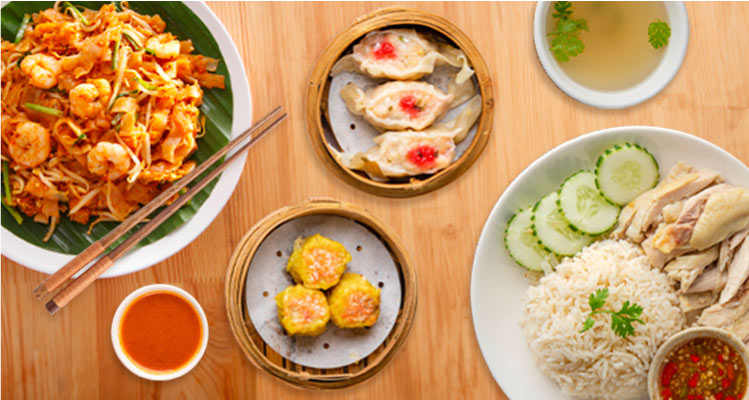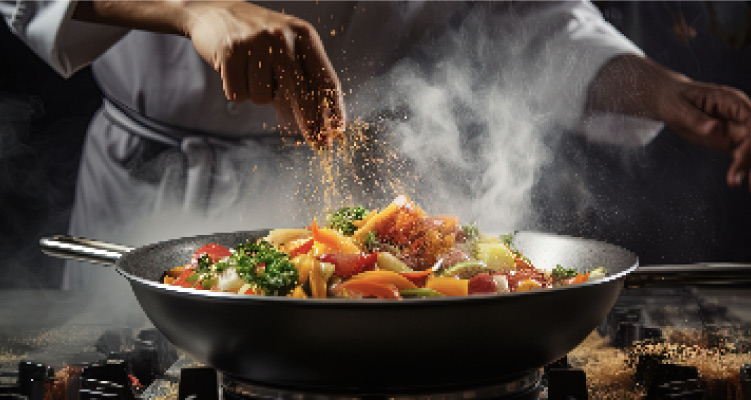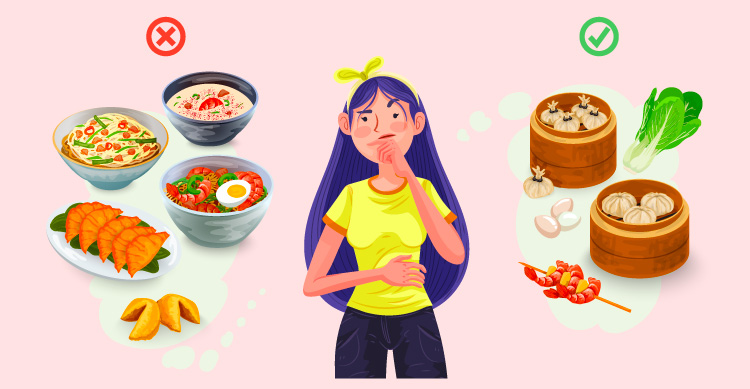
On our journey to discover how to improve the Malaysian diet and make it better for our health, we have already learned how to make Malay cuisines healthier in the previous article. Now, let's switch our focus to Chinese cuisine. Similar to what we did for Malay cuisine, we'll explore how to enjoy tasty Chinese dishes while making sure they're good for our health.
A Tasty Blend of Oriental Flavours
Chinese cuisine consists of a tasty blend of traditional Chinese flavours with a Malaysian twist. Imagine enjoying dishes like wanton mee, hokkien mee, bak kut teh, hainanese chicken rice, dim sum, and those special communal meals where everyone shares different dishes. It is a unique mix of tastes that make Chinese-Malaysian cuisine stand out.

Common condiments like soy sauce, oyster sauce, sesame oil, ginger, and garlic add incredible flavours. These dishes are often prepared using various cooking methods such as stir-frying, stewing, or deep-frying.

However, we should be mindful of certain cooking methods or condiments that might affect our health. Some Chinese dishes are incredibly tasty and full of flavour, but may contain ingredients (such as highly processed meat) that could lead to health problems. So whether we cook at home or eat out, the excessive use of oil, salt, and sugar in sauces and gravies is something we need to watch out for.
Can Chinese Food Be Healthy?
It most certainly can! We have some easy and helpful tips to make Chinese food even healthier. When you are enjoying noodles like wanton mee, fish ball noodles, or pork noodles, opt for the soupy version instead as dry noodles can contain more fats and salt. And instead of slurping up every bit of soup, leave some behind to cut down on your intake of salt.

Adding more vegetables like choy sum (Chinese flowering cabbage), yau mak (similar to the Romaine lettuce), and bean sprouts to your noodles is another great way to make your meal healthier as this increases your fibre intake. Take a chance to ask for these changes when you place your order. With an increasing number of Malaysians getting more health-conscious, you’ll be surprised to find that some food vendors are more than willing to accommodate.

For many, nothing beats starting the day with a good dim sum breakfast. Those little dumplings, either steamed or fried, come in all sorts of shapes and flavours, each one packed with deliciousness. To make your dim sum experience healthier, try to balance your choices by going for steamed or veggie-filled options, and keep fried items to about 20% of your total consumption.
Select dim sum dishes that are made from shrimp to consume less fat. Be mindful about the sweet sauce that’s typically offered, dip sparingly, or enjoy your dim sum on its own. You can also choose to enjoy it with the ginger-vinegar dip, which has less salt and sugar. By enjoying dim sum in moderation and making healthier choices such as these, you can continue to enjoy these delightful bites for a long time to come while being mindful of your health.
Gathering around the table for communal meals, where everyone shares different dishes, is something we truly treasure in the Chinese culture. To make these get-togethers even better for our health, consider ordering at least two vegetable-based dishes, like stir-fried greens or a tasty vegetable soup. When it comes to proteins, try out leaner options like steamed seafood, herbal chicken, or even heart-healthy plant-based choices like tofu, which is better for your heart compared to red meats like beef.
It is also wise to use less oil and salt when cooking, saving dishes with salted egg, buttermilk, and sweet and sour sauce for special treats because they tend to have lots of unhealthy fat and sugar. Prioritising these dietary considerations can contribute towards a well-balanced diet that promote our health while we continue to enjoy our culinary traditions. These simple changes are easy to adopt, the key lies in being consistent.
In Summary
Enjoying Chinese food does not mean compromising on our health. By making thoughtful choices in terms of the ingredients and cooking methods, we can enjoy our rich heritage without affecting our well-being. Ready to make a change? Check out this recipe for steamed cabbage rolls.
As we look forward to exploring Indian cuisine in the next article, don't forget to check out the previous article on making Malay cuisines healthier!
Reference
This article is contributed by
Georgen Thye, Consultant Dietitian
BSc. (Hons.) Nutrition and Dietetics, IMU
Council Member of the Malaysian Dietitians' Association (2021-2023)